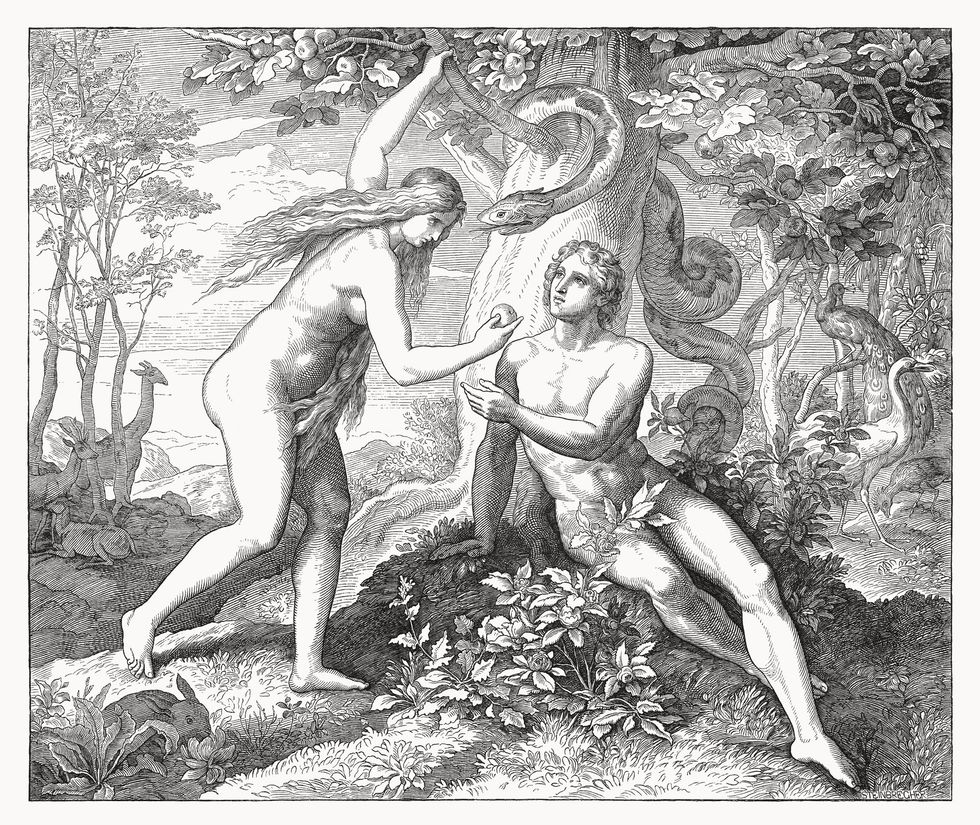Charlie Peters discusses submarine incident off the coast of Egypt
GB News
The expert connected the Garden of Eden to ancient concepts of a sacred mountain
Don't Miss
Most Read
Trending on GB News
A researcher has made a controversial claim about the location of the biblical Garden of Eden, suggesting it may have been located at what is now a popular tourist hotspot.
Konstantin Borisov, who holds a PhD in computer engineering, published his unconventional theory in the journal Archaeological Discovery.
Borisov's theory requires understanding what the Bible says about Eden's location.
The biblical text describes a river flowing from Eden that splits into four: Pishon, Gihon, Tigris and Euphrates.

Borisov also connected the Garden of Eden to ancient concepts of a sacred mountain
GETTY
While the locations of Pishon and Gihon remain unknown, the Tigris and Euphrates run through modern-day Iraq.
This geographical detail has led most Bible scholars to conclude that Eden was located in that region.
However, Borisov has argued that the Gihon river is actually the Nile, citing the view of Jewish-Roman historian Flavius Josephus.
After consulting a reconstructed map of Earth from 500 BC, Borisov claimed "it becomes apparent that the only four rivers emerging from the encircling Oceanus are the Nile, Tigris, Euphrates, and Indus".
MORE LIKE THIS:
This reinterpretation places Eden in Egypt rather than Iraq.
Borisov further claimed the Great Pyramid of Giza was built near where the Tree of Eternal Life once stood.
He cited a simulation showing that a blast inside the King's chamber creates an electric field resembling a tree-like pattern.
"This curved form is distinctive and can only be achieved through a combination of the pyramid-shaped structure and the electric force," Borisov stated.

Borisov further claimed the Great Pyramid of Giza was 'built near where the Tree of Eternal Life once stood'
GETTY
Borisov also connected the Garden of Eden to ancient concepts of a sacred mountain.
"In ancient cultures, Egyptian, Akkadian, Assyrian, Babylonian, Indian, Persian, Chinese, and Greek, there existed a concept of the sacred mountain of the world upon which the tree of life was believed to be situated," he wrote.
He concluded that "the sacred mount, where the tree of life is said to reside, can only be the Great Pyramid of Giza".
"As for the immortality ascribed to Adamah by God, the Great Pyramid of Giza certainly fulfills this notion with its remarkable endurance and structural integrity," he said.
He suggested Adam's 930-year lifespan could imply "the pyramid might have ceased to fulfill its primary function or failed" after a long period.
Despite Borisov's elaborate theory, most biblical experts remain unconvinced.
The scholarly consensus continues to point toward southern Iraq's marshes, near the Tigris and Euphrates rivers, as the most plausible location for the Garden of Eden.
The pyramids were built around 2600 BC, more than 1,000 years after the events described in the first chapter of Genesis.







